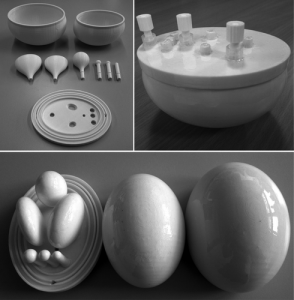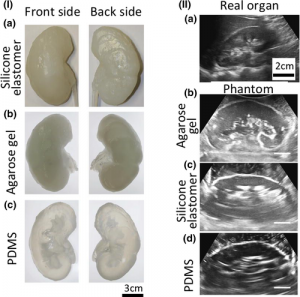 Phantoms are models of organs that can be created to test things like proper medication dosage, for example. In a paper entitled “Recent advances on the development of phantoms using 3D printing for imaging with CT, MRI, PET, SPECT, and ultrasound,” a research team discusses the 3D printing of phantoms.
Phantoms are models of organs that can be created to test things like proper medication dosage, for example. In a paper entitled “Recent advances on the development of phantoms using 3D printing for imaging with CT, MRI, PET, SPECT, and ultrasound,” a research team discusses the 3D printing of phantoms.
“Printing technology, capable of producing three‐dimensional (3D) objects, has evolved in recent years and provides potential for developing reproducible and sophisticated physical phantoms,” the researchers state. “3D printing technology can help rapidly develop relatively low cost phantoms with appropriate complexities, which are useful in imaging or dosimetry measurements. The need for more realistic phantoms is emerging since imaging systems are now capable of acquiring multimodal and multiparametric data.”
Three questions are posed by the researchers:
- Is the resolution of 3D printers sufficient for existing imaging technologies?
- Can materials of 3D printed phantoms produce realistic images representing various tissues and organs as taken by different imaging modalities such as computer tomography (CT), positron emission tomography (PET), single‐photon emission computed tomography (SPECT), magnetic resonance imaging (MRI), ultrasound (US), and mammography?
- How feasible or easy is it to print radioactive or nonradioactive solutions during the printing process?
 The researchers review several published cases of 3D printed phantoms of multiple parts of the body. The resolution of the 3D printers used is, according to them, sufficient for 3D printing phantoms.
The researchers review several published cases of 3D printed phantoms of multiple parts of the body. The resolution of the 3D printers used is, according to them, sufficient for 3D printing phantoms.
“However, better coverage of materials would have been helpful to develop realistic phantoms, achieving sizes of tissues and organs comparable to those of humans and animals,” they add. “The materials of the printers are yet to demonstrate the extent of what is required for tissues or organs so that they can be used in multimodality hybrid imaging. In addition, there have been only limited discussions or investigations on how the radioactive solutions may affect the properties of the 3D‐printed materials.”
There is a lot of potential for growth in this area, the researchers continue, but companies that develop the 3D printers and materials should consider a wider range of material properties useful in medical imaging. They also propose the development of a 3D printer specifically designed for 3D printing phantoms.
“3D‐printed phantoms will be pivotal in the evolution of the medical imaging field, as they give the opportunity to test and improve several aspects of the scanners’ hardware and software,” the researchers conclude. “At the moment, it is feasible to use some specific phantoms for two or three imaging modalities, however, the technology requires further improvement for use with multimodality systems.”
The paper is an extremely detailed look at the many 3D printers and materials used to 3D print phantoms, and it also suggests looking more toward the bioprinting of phantoms for better biological realism. Soft, moving 3D printed phantoms are discussed, as well as phantoms containing fluids and radiotracers. 50 studies are discussed in total, and overall the researchers conclude that 3D printing is an effective method of producing phantoms – and that it has a lot more potential to do so in the future.
Authors of the paper are Valeria Filippou and Charalampos Tsoumpas.
Discuss this and other 3D printing topics at 3DPrintBoard.com or share your thoughts below.
Subscribe to Our Email Newsletter
Stay up-to-date on all the latest news from the 3D printing industry and receive information and offers from third party vendors.
Print Services
Upload your 3D Models and get them printed quickly and efficiently.
You May Also Like
Consolidation in AM: How 2025 Is Shaping the Industry’s New Normal
The first half of 2025 has been marked by a clear shift in the additive manufacturing (AM) industry. Companies are no longer just focused on developing new tech by themselves....
Etsy Design Rule Change Reduces Selection of 3D Printed Goods
Online marketplace Etsy has implemented a rule change requiring all 3D printed goods on the site to be original designs. The update to the site’s Creativity Standards states, ¨Items produced using...
U.S. Congress Calls Out 3D Printing in Proposal for Commercial Reserve Manufacturing Network
Last week, the U.S. House of Representatives’ Appropriations Committee moved the FY 2026 defense bill forward to the House floor. Included in the legislation is a $131 million proposal for...
Transforming From Tourist to Native: Duro CEO Michael Corr Explains Why the Company Rebuilt its PLM Software on AI
In these early innings of the AI boom, many market analysts have expressed concern that AI spend has gotten too far ahead of the technology’s proven ability to deliver significant...

































